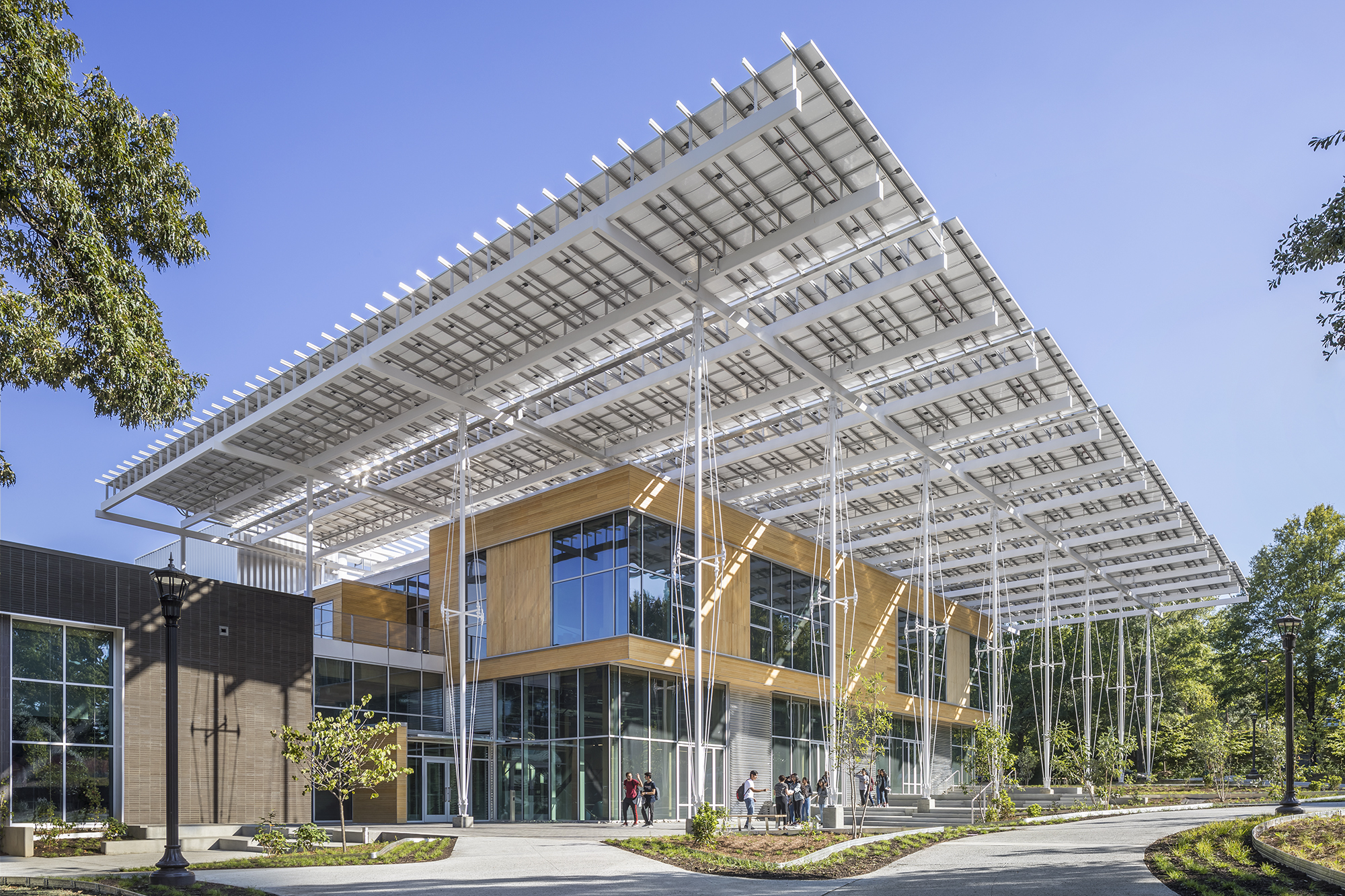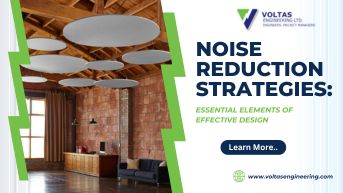The growing economy is contributing to the increasing noise in the fast-paced and bustling cities of Surrey and Vancouver. The endless noise created by people, machines, and vehicles disrupts the peace of daily life. Noise reduction techniques have become crucial components of efficient design as a response to this growing concern. In this article, with the expertise of Noise Mitigation Consultant, we will explore the need for reducing noise and its benefits. Moving forward, we will delve into a range of strategies that can be employed to achieve a quieter and more conducive atmosphere for improved concentration, productivity, better sleep, and enhanced quality of life.

12 Reasons Why Noise Reduction is Necessary
Improved Concentration and Focus
Reducing background noise can improve concentration, allowing people to focus better on their duties, whether they are learning, working, or performing complex activities.
Enhanced Productivity
Quieter environments promote productivity as there are no unnecessary distractions and interruptions. This helps people to work more efficiently and accomplish tasks more effectively.
Better Sleep Quality
Noise reduction in residential areas or bedrooms can significantly improve sleep quality. A quieter environment promotes restful sleep. This results in good mental health and well-being.
Stress Reduction
Constant noise exposure can trigger the body’s stress response. This increases stress hormone levels. Reducing noise can help lower stress levels and promote relaxation.
Improved Cognitive Performance
Research has shown that noise reduction positively impacts cognitive abilities, memorization capabilities, and information processing.
Enhanced Communication
Lowering background noise in social or work settings improves communication, making it easier to hear and understand conversations without straining.
Reduced Risk of Hearing Loss
Chronic exposure to loud noises can lead to hearing impairment over time. Implementing noise reduction measures helps protect individuals from potential hearing damage.
Better Mental Health
Quiet spaces contribute to a positive mental state and reduce anxiety, irritability, and symptoms of mental health disorders.
Community Well-being
Noise reduction projects in neighborhoods or public areas can boost community cohesion and overall individual happiness.
Increased Property Sales
Quieter neighborhoods and buildings are often more attractive to potential buyers or tenants, leading to increased property values.
Respect for Wildlife
Reducing noise in natural habitats and protected areas can benefit wildlife by minimizing disruptions to their habitats and breeding patterns.
Better Learning Environments
Noise reduction in educational settings improves students’ ability to focus, leading to a more conducive learning environment.
12 Strategies for Noise Reduction
Identify Noise Sources
The first step in any noise reduction strategy is to identify the sources of noise. This could be external noise from traffic or machinery or internal noise generated by equipment, appliances, or human activities. Understanding the origins of noise will help in devising targeted solutions.
Acoustic Design
Architects and designers can incorporate acoustic design principles into the layout of buildings and spaces. This involves the strategic placement of sound-absorbing materials, barriers, and diffusers to minimize the reflection and transmission of sound waves and promote peace of mind.
Soundproofing Materials
Using appropriate soundproofing materials is key to reducing noise transmission. Materials like acoustic panels, noise-reducing curtains, acoustic foam, and resilient underlayments can be used to dampen and absorb sound. These materials are designed to minimize sound reflections and vibrations, creating a quieter and more peaceful environment. Additionally, soundproofing materials can be applied to various areas such as walls, floors, ceilings, and doors to effectively block out unwanted noise from entering or leaving a space.
Isolation and Decoupling
Isolating noise sources from the rest of the environment can be highly effective. Decoupling mechanical systems, such as HVAC units, from the building’s structure can prevent vibrations from traveling and causing noise. Similarly, isolating noisy equipment in factories or workplaces can help reduce overall noise levels.
White Noise and Masking
Introducing a controlled level of background noise (white noise) or sound masking can help to mask more intrusive sounds, making them less noticeable and distracting. This can be particularly useful in open office environments where conversations and phone calls can be disruptive. Additionally, white noise or sound masking can also promote a more peaceful and relaxing atmosphere in spaces such as bedrooms or meditation rooms.
Noise Regulations and Guidelines
Abiding by the noise regulations and guidelines set by local authorities is essential, especially in urban planning and construction projects. Compliance with these regulations helps to avoid potential fines and legal issues related to noise pollution. These sound standards often define permissible noise levels and hours of operation for various activities.
Maintenance and Upkeep
Regular maintenance of equipment, machinery, and noise reduction installations ensures their efficiency over time. Neglecting system maintenance can result in systems generating more noise as they wear down or become less effective at noise reduction.
Human Behavior and Education
Noise reduction strategies can involve educating people about noise etiquette and responsible behavior, especially in shared spaces like offices, residential buildings, or public areas. These strategies help promote work productivity.
Product Design
When designing products and layouts, noise reduction should be considered. Engineers work on minimizing noise levels on work premises to provide users with a quieter experience. Proper planning and design can help minimize noise propagation, control sound reflections, and create quieter spaces, improving productivity, comfort, and overall well-being.
Green Spaces and Natural Elements
Incorporating green spaces, vegetation, and water bodies in urban planning can act as natural noise barriers, absorbing and diffusing sound waves. This can help reduce noise pollution and create a more peaceful and tranquil environment for residents.
Layout and Zoning
Isolating noise sources from the rest of the environment can be highly effective. Decoupling mechanical systems, such as HVAC units, from the building’s structure can prevent vibrations from traveling and causing noise. Similarly, isolating noisy equipment in factories or workplaces can help reduce overall noise levels.
Innovation and Research
Proper zoning and layout of spaces can segregate noisy areas from quiet zones, helping to prevent noise from spreading to inappropriate areas. This can be achieved by strategically placing soundproof barriers or insulation materials in between the noisy and quiet areas.
Green Spaces and Natural Elements
Continuous research and innovation in noise reduction technologies can lead to more efficiency and effectiveness. This may benefit construction sites as they can minimize the impact of noise on nearby residential areas, improving the overall quality of life for residents.
Conclusion
Noise reduction strategies are highly effective in promoting a peaceful environment, enhancing work productivity, minimizing communication errors, and promoting overall well-being. To ensure peace of mind, noise mitigation strategies must be implemented. Also, the design layout of a building must be constructed with noise reduction in mind. If you are confused about this, you can contact our Engineers at Voltas Engineering in Surrey, BC, Canada for innovative design layout solutions to ensure your peace of mind.


